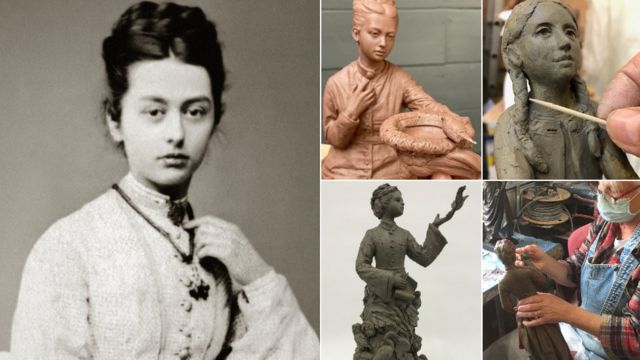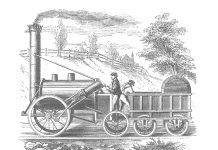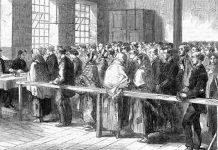A campaign has been launched to honour the legacy of RSPB founder Emily Williamson, forgotten eco activist.
Emily Williamson (1855-1936) loved birds, hated cruelty, and was appalled by the fashion for feathers. Determined to halt the cruel plumage trade, she invited her friends to tea at her home, The Croft, Didsbury, and asked them to sign a pledge to ‘Wear No Feathers’. This is how the Society for the Protection of Birds (RSPB) was born, in 1889. All of its members were women.
Emily’s campaign snowballed. It triumphed with the Plumage Act of 1921, banning the import of exotic feathers. The 50 year craze for elaborately plumed hats ended. Countless bird species were saved from extinction, and the RSPB evolved into the powerful conservation charity it is today. Yet few have heard of its founder.
Why does she need a statue?
A statue can be a powerful catalyst for change.
Today we are facing a climate emergency. Our skies are emptying of birds. A statue of Emily will provide a focus for a new generation of young people, including girls, helping them to understand the value of nature and the power of activism. We need to fight for our birds and biodiversity.
Emily Williamson’s story is inspiring. One voice can make a difference.
Where will it go?
In Fletcher Moss Park, Didsbury, Manchester – the beautiful landscaped gardens created by Emily and her husband Robert Williamson, who lived at The Croft 1882 -1912. It is one of North West England’s most valued open spaces; a nature-lovers’ haven rich in birdlife and flora. A team of volunteers has restored the gardens back to their Victorian prime: you’ll find unusual wildflowers, exotic trees and rare Alpine species. It’s also a place rich in birdlife – tree creepers, bullfinches, siskins and mistle thrushes are regular visitors.
Emily’s statue will add another popular dimension. In 2019, Fletcher Moss Park won a ‘UK’s Best Loved Park’ award from Fields in Trust.
‘Murderous Millinery’
For half a century, from the 1870s to the 1920s, women on both sides of the Atlantic were gripped by a fashion craze that decreed all hats should be laden with feathers. Not just feathers, but wings and whole birds – often several birds at a time. Species the world over were slowly brought to the brink of extinction, and all for the sake of millinery. While the plumage trade swelled and prospered, thousands of invisible female ‘feather hands’ laboured away in London, Paris and New York, transforming bird skins and plumes into millinery accessories.
The ‘feather fight’, as it became known, was bitter, vicious and un-sisterly. Wearers of the ‘bird hat’ were attacked by the RSPB as narcissists and slaughterers. Edwardian fashion victims hit back, calling their female critics ‘plumage cranks’ and ‘feather faddists’. Why shouldn’t emancipated women wear what they wanted?
Milestones in the ‘Feather Fight’
In 1889 Emily invited a group of women to her home for tea and asked them to pledge to ‘Wear No Feathers’ and so was formed the Society for the Protection of Birds.
In 1891 Emily’s society merged with another all-female campaigning group, the Fur, Fin and Feather Folk, of Croydon. Emily Williamson, Eliza Phillips and Etta Lemon jointly took on leadership of the new Society for the Protection of Birds, appointing the Duchess of Portland as President.
By 1893 there were 10,000 members – now including male ‘honorary co-workers’ and by 1898 this had doubled to 20,000 members of 152 branches run by local secretaries.
In 1904 the Royal Charter was granted, making it the Royal Society for the Protection of Birds.
In 1921, after three decades of campaigning, the Plumage Act was passed, banning the import of exotic bird skins to Britain – and the fashion for feathers receded into the past.
Uncovering the Emily Williamson story
When author Tessa Boase approached the RSPB about its 1889 founder Emily Williamson, she was told categorically that no records existed – and certainly not a photograph. So began a mission to bring this intriguing, elusive woman out of the shadows – first with a book, and now a crowd-funded statue campaign. Didsbury’s pioneering conservationist might not have been historically celebrated, but this is now set to change.
Who’s involved in the campaign?
The Emily Williamson Statue Campaign began with the coming together of a shared vision.
Andrew Simcock and Tessa Boase believe that a statue for Emily Williamson could lead the way to achieving her the recognition that the history books so far haven’t awarded her.
Tessa is a Sussex-based journalist and social historian, whose 2018 book, Mrs Pankhurst’s Purple Feather (published in paperback in 2021 as Etta Lemon – The Woman Who Saved the Birds), uncovered the story of the women who founded the RSPB.
Andrew was responsible for instigating and running the high-profile campaign to bring a statue of Emmeline Pankhurst to the centre of Manchester in 2018, which is now loved by the community and sought out by visitors from all over the world.
The campaign is supported by the RSPB, whose CEO Beccy Speight plays an important role on the Emily Williamson Statue Committee.
Beccy Speight says, “Over 130 years ago, the RSPB was built on a foundation of campaigning to achieve change for the better and exactly one hundred years ago the Plumage Act was finally achieved. Now has never been a more important time for us all to speak up for nature, as we push for a green recovery from the pandemic and legislation like the Environment Bill makes its way through Parliament.
“This campaign provides a perfect opportunity to reflect on the vision of our founders, including the amazing Emily Williamson, and I’m delighted with the plan to honour her with a statue at her home where the Society for the Protection of Birds was founded. I hope this statue and her story will help inspire a new generation of people who simply want to protect nature from destruction for its own sake and for ours, as Emily, Eliza Phillips and Etta Lemon did a century ago.
“Fletcher Moss was later given to the people of Manchester and continues to provide a nature rich green space for everyone today, something we have all come to appreciate can help our health and wellbeing, particularly over the past year. Emily’s story shows that every individual can make a difference and help revive our world. What will you do?”







